Silver’s brilliant shine comes from its exceptional ability to reflect 95% of visible light without color alteration, creating that coveted mirror-like luster. You’ll achieve maximum brilliance through proper polishing techniques using specialized compounds and buffing wheels, while sterling silver’s 92.5% silver and 7.5% copper composition enhances both durability and reflective properties. Regular maintenance with gentle cleaning methods and proper storage prevents tarnish formation. Understanding these scientific principles and professional techniques will reveal silver’s true potential.
Understanding the Science Behind Silver’s Natural Luster
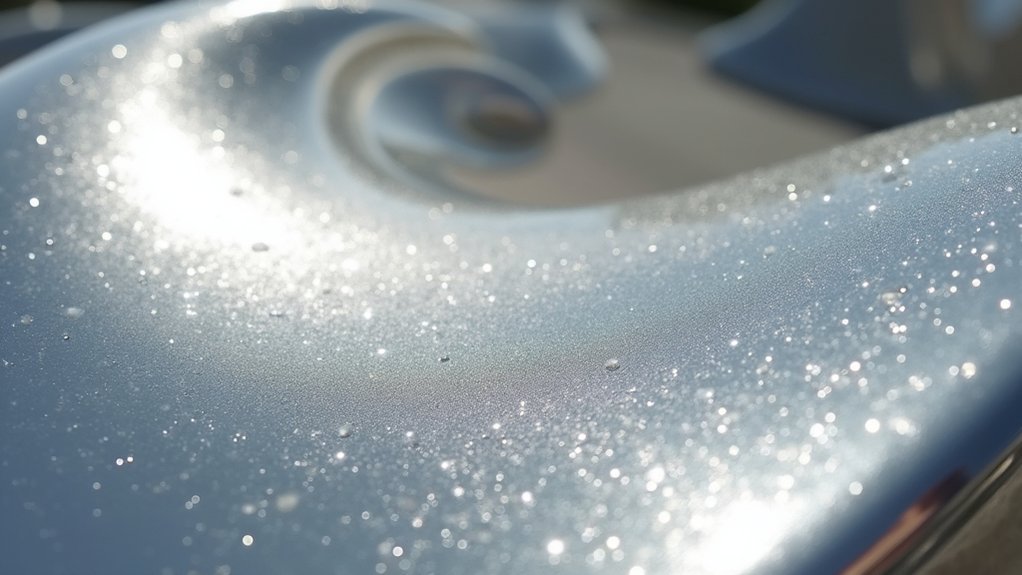
When light strikes silver’s surface, the metal’s unique atomic structure creates an extraordinary display of brilliance that’s captivated humans for millennia.
Silver’s atoms efficiently reflect light across the entire visible spectrum without altering its color—a phenomenon called “white light reflection.” This natural ability makes pure silver exceptionally radiant.
Silver’s exceptional ability to reflect the entire visible spectrum unchanged creates its signature luminous brilliance that has mesmerized civilizations throughout history.
You’ll find that sterling silver, containing 92.5% silver and 7.5% copper, maintains this brilliant shine while offering enhanced durability.
The copper alloy strengthens the metal without greatly diminishing its reflective properties.
However, silver’s luster isn’t permanent. When exposed to sulfur compounds in air, the surface oxidizes and forms silver sulfide, causing tarnish.
This darkened layer blocks light reflection, diminishing the metal’s characteristic brilliance until you restore it through proper cleaning.
The Role of Sterling Silver Composition in Brilliance
You’ll find that pure silver’s softness makes it impractical for everyday jewelry, which is why sterling silver’s 92.5% silver and 7.5% copper alloy proves superior.
The copper addition doesn’t just strengthen the metal—it actually enhances the brilliant shine you’re looking for in quality pieces.
This strategic composition gives you the durability needed for daily wear while maintaining that lustrous finish that makes sterling silver so desirable.
Pure Silver Vs Alloy
While pure silver boasts an unmistakable brilliance at 99.9% purity, its softness makes it impractical for items you’ll handle regularly.
You’ll find that pure silver bends and scratches easily, limiting its use to decorative pieces rather than functional jewelry.
Sterling silver offers the perfect compromise.
By combining 92.5% silver with 7.5% other metals, typically copper, you get enhanced durability without sacrificing shine.
This alloy maintains silver’s lustrous appearance while creating pieces sturdy enough for daily wear.
However, you’ll notice sterling silver develops a warmer hue compared to pure silver’s bright white finish.
The copper content also makes sterling silver more susceptible to tarnish through oxidation.
You’ll need regular maintenance to preserve its brilliance, but the trade-off gives you beautiful, functional jewelry that withstands everyday use.
Copper’s Durability Enhancement
Copper transforms sterling silver from a beautiful but fragile metal into a resilient powerhouse that can handle your daily routine.
When you wear sterling silver jewelry, copper’s presence makes all the difference between pieces that last and those that don’t. This 7.5% copper addition creates a structural backbone that prevents bending and breaking under pressure, ensuring the beauty of your sterling silver pieces endures constant wear and tear.
You’ll notice how copper allows your jewelry to maintain its brilliant shine while withstanding everything from handshakes to household tasks.
The copper-silver combination forms an alloy that polishes to exceptional luster, giving you both stunning aesthetics and practical durability that pure silver simply can’t match.
Professional Polishing Compounds and Their Applications
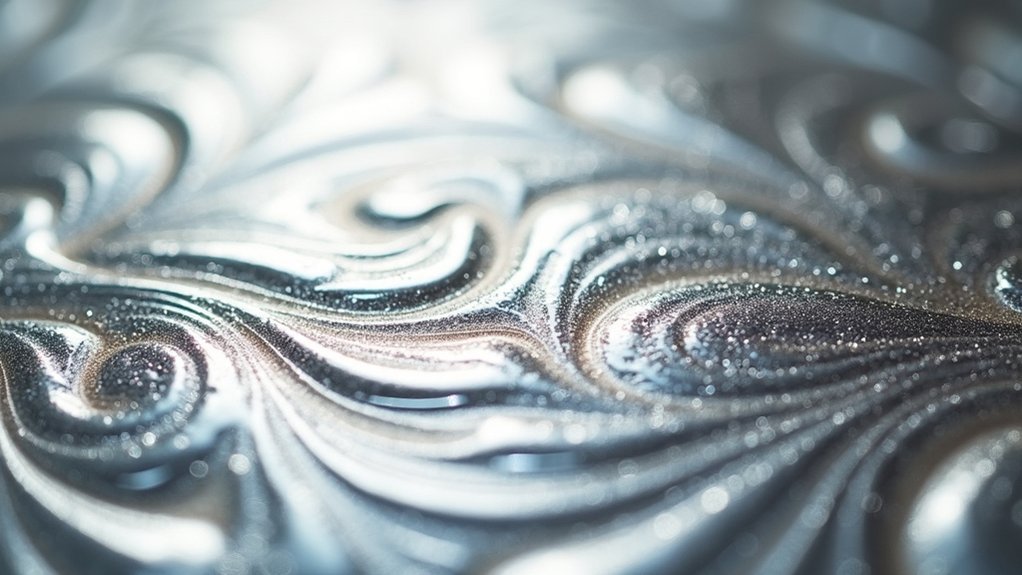
When tarnish dulls your silver’s brilliance, professional polishing compounds offer the most effective solution for restoration. These specially formulated products use fine abrasives to remove tarnish while protecting your silver’s surface from damage.
Quality silver polish brands like Weiman and Wright’s deliver exceptional results with their advanced formulations that achieve a stunning high-gloss finish.
Premium silver polish formulations from trusted brands transform tarnished pieces into gleaming treasures with professional-grade shine and protection.
You’ll want to apply these compounds using a soft cloth, gently buffing in circular motions to distribute the product evenly. Always follow manufacturer instructions regarding application time and amount to prevent over-abrasion that could scratch your pieces.
For severely tarnished or damaged silver, professional polishing services utilize industrial-grade compounds that can restore brilliance beyond what’s achievable with home methods, making your treasured pieces look like new again.
Advanced Buffing Wheel Techniques for Maximum Shine
You’ll achieve professional-level silver shine by mastering two critical buffing wheel techniques that separate amateur results from expert finishes.
First, you must select the right wheel grit and properly prepare it with the appropriate compound before starting your polishing process.
Second, you’ll need to develop consistent buffing motions that maintain even pressure while moving systematically across the silver surface.
Wheel Selection and Preparation
Although many polishing enthusiasts focus solely on compounds and techniques, the foundation of achieving that coveted mirror finish on silver lies in selecting and preparing the right buffing wheel.
Your wheel selection directly impacts polishing results – spiral sewn wheels excel at aggressive cutting and initial polishing stages, while loose wool wheels deliver superior final finishing for brilliant shine.
Proper preparation involves matching compounds to your chosen wheel. Apply tripoli to your cutting wheel for initial work, then switch to rouge on your finishing wheel for that mirror-like luster.
You’ll need to clean accumulated compound buildup regularly to maintain peak performance. Remember, a well-prepared wheel that’s properly matched to your buffing compound will consistently outperform even the most expensive alternatives when preparation’s neglected.
Proper Buffing Motion Techniques
Three fundamental motion principles separate amateur buffing from professional-grade results that transform ordinary silver into gleaming masterpieces.
You’ll achieve superior tarnish removal by mastering these essential techniques that work better than any polishing cloth.
Your buffing wheel technique requires constant, deliberate movement patterns:
- Maintain steady motion – Use slow, consistent movements and let the buffing wheel do the work to prevent overheating your silver pieces.
- Keep pieces moving – Never hold silver stationary against the wheel to avoid hot spots that create burn marks or uneven polishing.
- Apply light pressure – Gentle, even contact preserves intricate details while delivering professional silver polishing results.
Regular wheel cleaning removes debris buildup, ensuring each session delivers maximum shine without contamination dulling your silver’s brilliant luster.
Chemical Cleaning Methods Using Aluminum Foil and Baking Soda
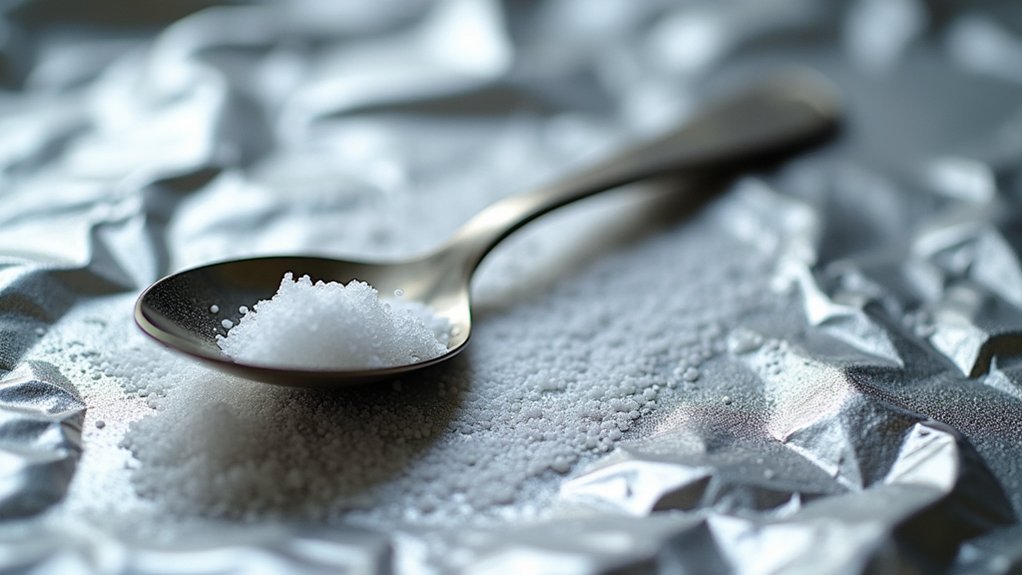
The aluminum foil and baking soda method stands out as one of the most effective chemical cleaning techniques for restoring silver’s natural brilliance.
This cleaning process works by transferring sulfur from your silver to aluminum through a simple chemical reaction.
You’ll need to line a bowl with aluminum foil, shiny side up, then add one tablespoon of baking soda per cup of boiling water.
Make certain your silver items touch the foil directly for best results.
This baking soda and foil combination acts as a powerful silver cleaner that can remove the tarnish within 2 to 10 minutes, depending on severity.
After soaking, buff with a microfiber cloth to complete the restoration process.
Commercial Silver Polish Products and Selection Criteria
Several commercial silver polish products offer specialized formulations that surpass simple home remedies in both effectiveness and convenience.
These cleaning products contain precisely calibrated chemical agents and gentle abrasives specifically designed for ideal silver care.
Professional silver polishes feature scientifically formulated compounds and mild abrasives engineered specifically for optimal silver preservation and restoration.
When selecting commercial silver polish, you’ll want to take into account these essential criteria:
- Compatibility – Choose non-abrasive formulas suited for sterling silver or silver-plated items
- Brand reputation – Wright’s, Weiman, and Tiffany’s offer proven effectiveness across various price points
- Protective features – Look for tarnish prevention properties that extend time between cleanings
You’ll find most products include clear application instructions for buffing without scratching delicate pieces.
The best commercial silver polish options combine immediate shine restoration with long-term tarnish prevention, ensuring your silver maintains its brilliance longer than traditional cleaning methods allow.
Alternative Cleaning Solutions: From Toothpaste to Ammonia
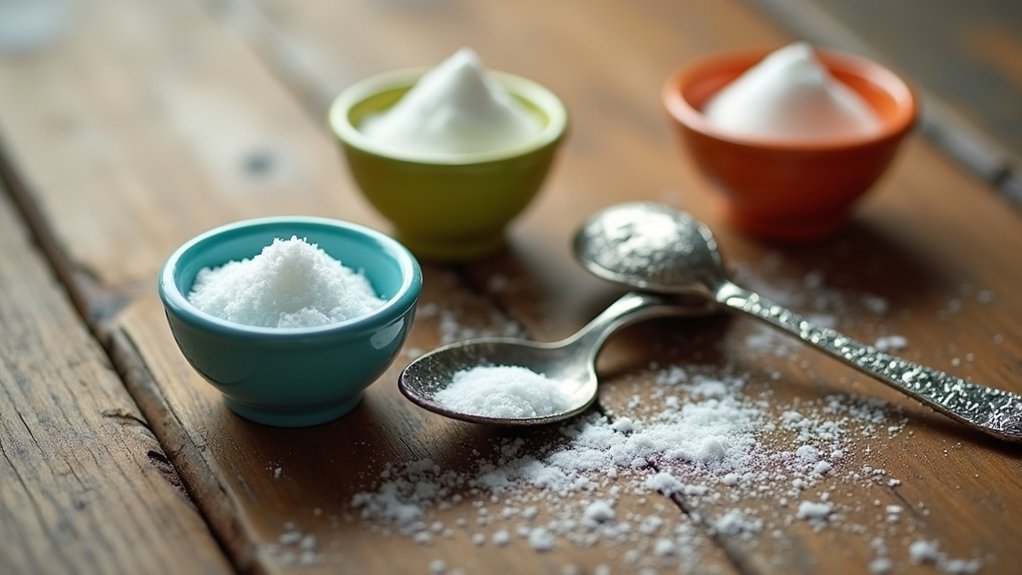
Beyond commercial products, household items you already own can serve as effective silver cleaning alternatives, though each comes with specific advantages and limitations.
Toothpaste might seem convenient, but it’s actually abrasive and can scratch your valuable silver pieces, diminishing their shine over time.
Ammonia offers better results when mixed with warm water (1 cup water to 1/2 cup ammonia) – simply soak your silver for 10 minutes to brighten its luster effectively.
Baking soda paired with aluminum foil creates a powerful chemical reaction that’s particularly effective for heavily tarnished pieces.
For quick touch-ups, hand sanitizer’s alcohol content works surprisingly well on minor tarnish without extensive scrubbing.
While these alternatives can work, commercial cleaners remain the safest option for precious pieces.
Proper Storage Techniques to Prevent Tarnish Formation
You’ve cleaned your silver to perfection, but now you need to store it properly to maintain that brilliant shine.
Preventing tarnish formation requires three essential strategies: using anti-tarnish storage solutions, controlling moisture levels, and employing protective wrapping techniques.
Master these storage methods, and you’ll keep your silver looking lustrous for years to come.
Anti-Tarnish Storage Solutions
Three key storage principles will keep your silver pieces brilliantly tarnish-free for years to come.
You’ll want to invest in specialized anti-tarnish pouches and cloths that actively absorb moisture and prevent oxidation. These materials create a protective barrier around your silver.
Here’s what works best for long-term storage:
- Wrap individual pieces in acid-free tissue paper or unbleached cotton muslin to prevent scratches and contact tarnish.
- Add camphor blocks or silica gel packs to your storage areas for extra humidity absorption.
- Never use rubber or plastic containers, as they emit chemicals that accelerate tarnishing.
You should regularly inspect your storage environment to guarantee it stays dry and contaminant-free.
This proactive approach maintains your silver’s brilliant shine effortlessly.
Moisture Control Methods
Controlling moisture stands as the single most critical factor in preventing silver tarnish formation. You’ll need effective moisture control methods to maintain your silver’s brilliance in storage.
Place chalk pieces in your storage containers or areas to absorb excess moisture naturally. Chalk acts as a simple yet powerful moisture absorber, directly targeting tarnish’s primary cause.
You can also use silica gel packets inside storage boxes to control humidity levels efficiently. These packets keep your environment consistently dry, preventing tarnish before it starts.
Regular monitoring of your storage areas guarantees ideal conditions. Check humidity levels frequently and replace moisture absorbers when needed.
Protective Wrapping Techniques
While moisture control forms the foundation of silver protection, proper wrapping techniques create an essential barrier between your precious pieces and harmful environmental elements.
You’ll need to establish a protective layer that prevents air and contaminants from reaching your silver’s surface.
Start by ensuring each piece is properly cleaned and dried before storage.
Then implement these wrapping strategies:
- Wrap individual items in acid-free tissue paper or unbleached cotton muslin to prevent chemical reactions
- Use anti-tarnish pouches or cloths specifically designed to minimize exposure to air and moisture
- Never place silver directly against rubber or plastic materials that emit sulfur compounds
These techniques work together to prevent tarnish formation while maintaining your silver’s brilliant shine for years to come.
Environmental Factors That Affect Silver’s Appearance
Although silver naturally gleams with an unmistakable luster, environmental factors can quickly rob it of its brilliant shine.
Humidity, salt air, and chlorinated substances accelerate tarnishing, transforming your pristine pieces into tarnished silver with yellow-gray or black films. Your storage area plays a vital role—damp basements or bathrooms create ideal conditions for sulfur reactions.
Daily exposure to perfumes, lotions, and household cleaners containing chlorine compounds dulls your silver’s appearance.
Even seemingly harmless pollutants in the air contribute to surface deterioration. You’ll notice faster tarnishing near swimming pools, ocean environments, or industrial areas.
To clean silver jewelry effectively, you must first understand these environmental threats.
Control moisture levels, avoid chemical exposure, and choose your storage location wisely. Recognizing these factors helps you prevent damage before it occurs.
Hand-Polishing Techniques for Delicate Jewelry Pieces

When you’re ready to restore your delicate silver jewelry’s natural brilliance, hand-polishing offers the gentlest approach to remove tarnish without risking damage to intricate details or precious stones.
You’ll achieve the best results by following these essential steps:
- Use a soft cloth that’s lint-free to gently buff the surface in circular motions.
- Apply specialized silver polish or mild detergent mixed with water to avoid abrasive damage.
- Work in small sections to evenly distribute polish and prevent surface wear.
Focus on thorough drying before storage, as moisture accelerates future tarnishing.
Your circular buffing technique guarantees even polish distribution while protecting delicate designs.
Regular hand-polishing doesn’t just enhance brilliance—it maintains structural integrity by preventing long-term tarnish buildup that could compromise your jewelry’s beauty and durability.
Professional Equipment for High-End Silver Finishing
How do professional jewelers achieve that flawless, mirror-like finish that elevates silver pieces from ordinary to extraordinary? They rely on sophisticated equipment that delivers consistent, high-quality results you simply can’t match with hand-polishing alone.
Ultrasonic cleaners use high-frequency sound waves to create microscopic bubbles that penetrate intricate designs, removing tarnish and grime without damaging delicate details.
Professional polishing machines equipped with various wheels guarantee uniform shine across entire pieces.
Specialized polishing compounds like rouge and tripoli offer different abrasiveness levels, allowing precise control over the finishing process.
Advanced electroplating techniques can deposit pure silver layers for enhanced brilliance and durability.
Finally, protective coatings seal the shine, reducing future tarnish and extending your silver’s lustrous appearance for years.
Preventive Maintenance Strategies for Long-Term Brilliance
While professional equipment delivers stunning results, the real secret to maintaining that mirror-like finish lies in what you do after your silver leaves the jeweler’s hands.
Effective preventive maintenance starts with proper daily care. You’ll want to clean each piece with a soft cloth after wearing to remove oils that accelerate tarnishing. Before exposing jewelry to lotions or perfumes, apply protective sprays designed specifically for silver.
Smart storage solutions make all the difference:
- Use anti-tarnish bags made from silversmiths cloth
- Store pieces in airtight containers with silica gel packs
- Keep humidity levels consistently low
Regular inspection and polishing, especially before holidays or special events, prevents heavy tarnish buildup.
These simple habits preserve your silver’s brilliance far longer than reactive cleaning alone.
Quality Assessment and Restoration of Damaged Silver Items
Three key factors determine whether your damaged silver piece deserves restoration or replacement: authenticity markers, structural integrity, and historical significance.
During quality assessment, you’ll need to verify the “925” stamp indicating 92.5% silver content, which directly affects both value and restoration feasibility.
For heavily tarnished pieces, professional restoration services use specialized techniques to remove deep oxidation and scratches while preserving the item’s integrity. A qualified jeweler can evaluate whether your piece requires simple polishing or more extensive treatment.
Successful restoration often involves reapplying protective layers and using anti-tarnish solutions to prevent future oxidation.
However, you shouldn’t attempt complex repairs yourself—improper techniques can destroy historical value and craftsmanship.
Regular maintenance following restoration guarantees your investment remains protected and brilliant.
Frequently Asked Questions
How to Make Silver Super Shiny?
You’ll get super shiny silver by using baking soda with aluminum foil for chemical tarnish removal, applying toothpaste gently, or using commercial polish. Store pieces in anti-tarnish pouches and clean regularly.
What Makes Silver Shinier?
You’ll make silver shinier by removing tarnish with baking soda treatments, hand-polishing with specialized cleaners, and maintaining proper storage. Silver’s natural 95% light reflectivity creates brilliance when you’ve eliminated oxidation buildup.
What Chemical Makes Silver Shiny?
You’ll find that silver’s natural metallic properties create shine, but cleaning chemicals like baking soda, vinegar, ammonium hydroxide, or polishing compounds containing aluminum oxide remove tarnish to restore silver’s brilliant reflective surface.
What Cleans Silver the Best?
You’ll get the best results using aluminum foil, baking soda, and hot water together. This chemical reaction removes heavy tarnish within minutes, outperforming store-bought cleaners and DIY solutions.
In Summary
You’ll achieve silver’s brilliant shine through understanding its natural properties and applying proper techniques. Whether you’re using professional compounds, aluminum foil methods, or hand-polishing delicate pieces, consistency matters most. Don’t neglect preventive maintenance—it’s your best defense against tarnishing. Remember that quality equipment makes a difference for high-end pieces, but even basic methods can restore damaged silver. Master these fundamentals, and you’ll maintain that coveted lustrous finish indefinitely.


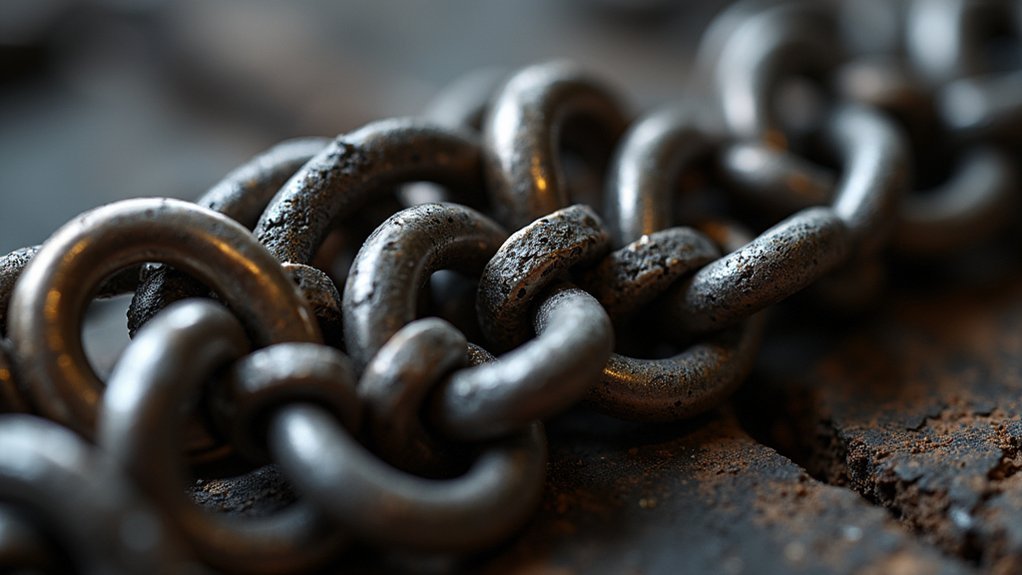
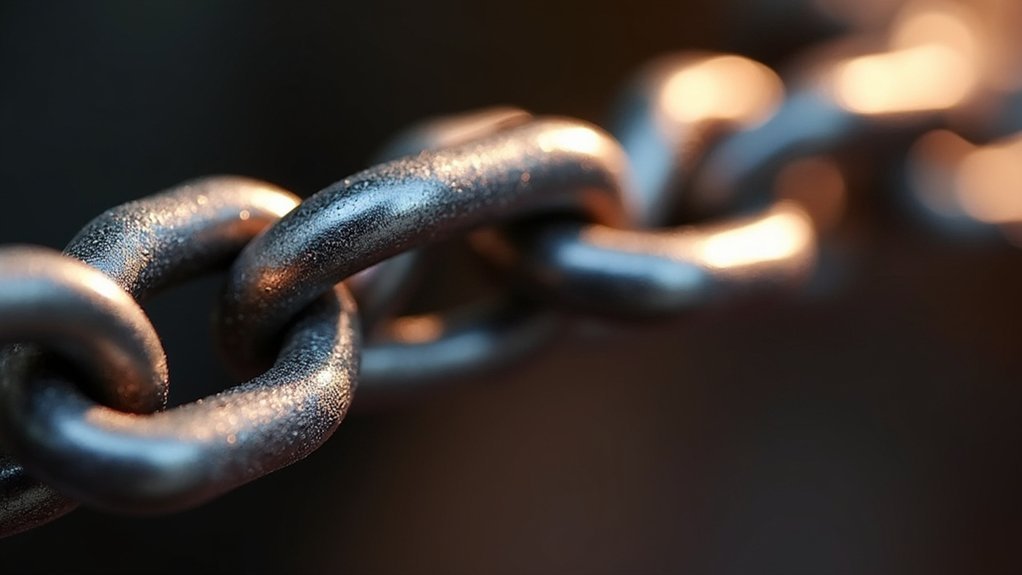
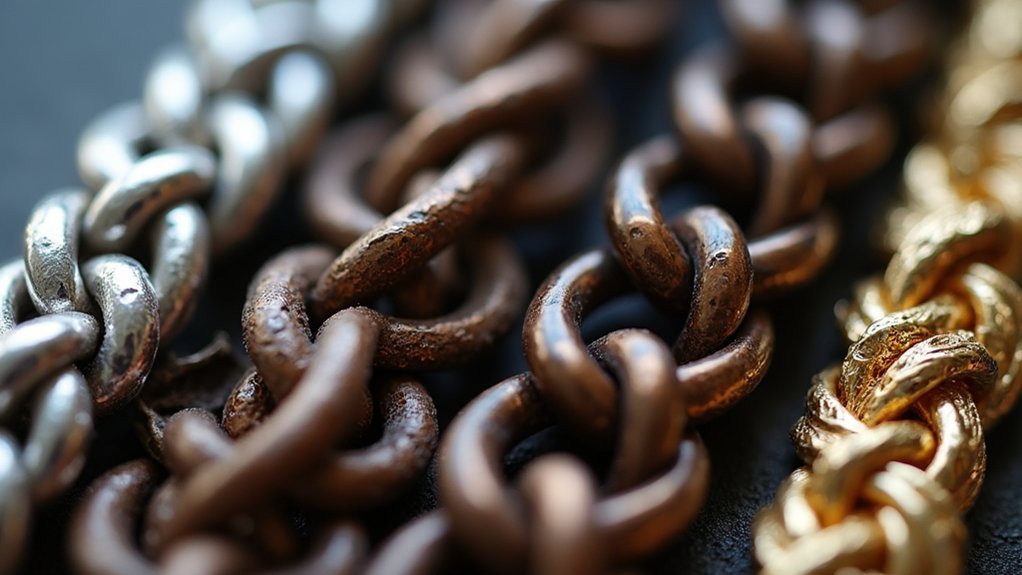
Leave a Reply